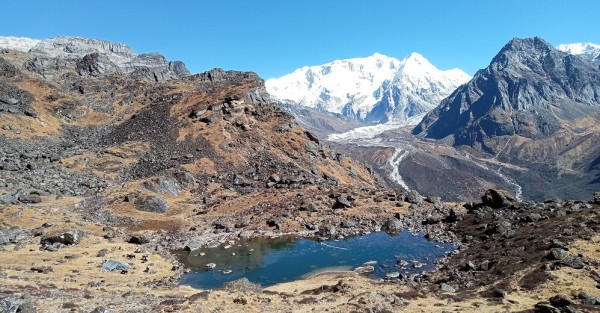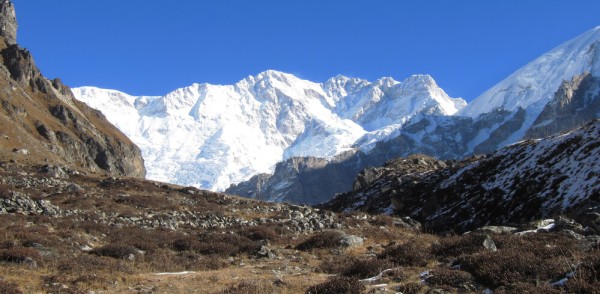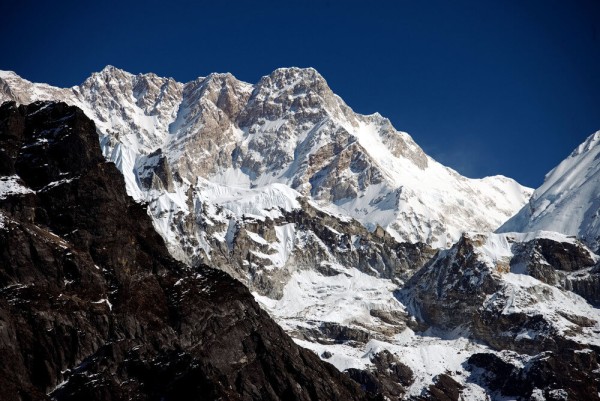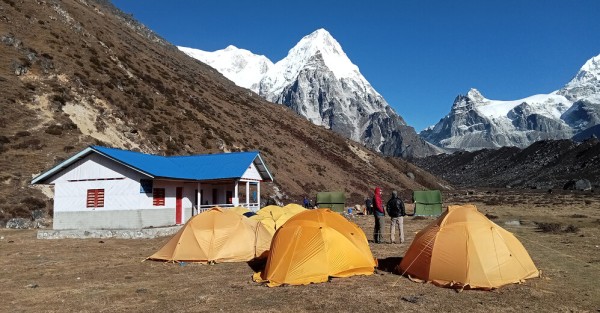
Kanchenjunga trekking has emerged as the ultimate trek adventure due to its natural profoundness, peace, and harmony, which it brings to us in various forms. And this is what they call it – there is magic in the air.
Trekking to Kanchenjunga Base Camp Nepal.
Trekking to the Kanchenjunga region of Nepal offers diverse trekking experiences for travelers in the eastern region of Nepal. The arduous trail of Kanchenjunga turns into a perfect relish with the sights of colorful Wildflowers, Himalayan Blue sheep, and many astounding falls. The remote trek provides the best encounters for travelers seeking adventure and spiritual enlightenment.
Along the trek, individuals get to cross the mini-wood bridges in small rivulets and pass through several high-altitude passes. The trek is not for the faint of heart as it involves alpine challenges, difficulties in trekking from rugged terrain, and exhaustion from steep uphill and downhill climbs. But trekkers are treated to the magic of sunsets, star-filled night skies, and warm local meals.
Naturally and Culturally Profound
Kanchenjunga Base Camp trek gives the best sights of snow-capped mountains such as Mt. Jannu (7,710 meters), Yalung-Khang (8,505 meters), and Kanchenjunga (8,586 meters). Trekkers encounter many glaciers, a turquoise lake called Yalung Lake (^5,000 meters) up to the South and North Base Camp of the third-highest peak in the world-Kanchenjunga.


The feeling is superfluous when trekkers can witness traditional rituals and ceremonies of different ethnic communities. They will explore remote villages in the mountains and can observe the lifestyles of the natives. Rai, and Limbu people mainly inhabit the eastern part of Nepal. Sherpa communities are commonly found in the high-altitude regions where they will be witnessing their attire, ornaments, and their family life.
Vantage points in Kanchenjunga Trek
The Kanchenjunga trekking trail is a must to explore if a traveler wants to experience remoteness and a challenging trek that offers the pristine beauty of the eastern Himalayas. No doubt the sense of accomplishment and the stunning views at the summit can be life-changing and unforgettable. The popular vantage viewpoints and local villages in the Kanchenjunga trekking trail include:
01: A traditional Loacal Village Phale and Ghunda Village.
02: Khambachen Valley is one of the most beautiful places in the world.
03: Lhonak Valley Yak grazing Valley Close to Kanchenjunga.
04: Pang Peam is Known as Kanchenjunga North Base Camp.
05: Drohmo Ri viewpoint. From there, trekkers can explore magnificent Kanchenjunga views and the surrounding Himalayan peaks.
06: The Three High Passes Selele La, Mirginla, and Sinelapcha Bhanjyang.
07: Probably the most beautiful and peaceful Campsite Tseram and Ramche, during the whole Kanchenjunga Trekking route.
08: Oktang viewpoint, from this viewpoint spectacular Kanchenjunga south views, can be visible.
Getting to Kanchenjunga Base Camp
Kanchenjunga trek is not just a journey to the two base camps north and south of the world’s third-highest mountain. Trails up to the base camp and back to Taplejung offer a diverse range of experiences. Trekkers would find beautiful fields in their welcoming position once they start hiking from Taplejung. A few phases of trekking involve passing through rhododendron forests and pasturelands, crossing suspension bridges, and climbing uphill and downhill. The trail also offers beautiful lakes, waterfalls, and scenic sights of mountains.


Local Cuisines and Native Lifestyle
Trekkers can taste the local cuisines and observe their native lifestyles as most of the teahouses in the region are operated by local families. The tea houses offer delicious Nepalese cuisines like dal bhat (Lentils and rice). Most teahouses also offer some other foods such as momos, thukpa, omelets, toast with jams, tea, and coffee.
Native Lifestyles in the Himalayas are quite interesting. Yak farming is one of the major sources of livelihood in the Himalayan regions of Nepal, so trekkers can witness Yak grazing while roaming the entire trekking trail. Some knowledgeable locals would also tell interesting stories about past events in their village areas. They practice religious activities such as visiting Gompas and ancient Buddhist monasteries.
Best Season of Travel
Many trekkers have expressed their reliable seasons as Spring (March to May) and Autumn (September to November) on the Himalayan trails. These are the blooming seasons when the weather is clear, dry, and pleasant. For more information, visit https://www.visithimalayastrek.com/kanchenjunga-base-camp-trek.
Media Contact
Company Name: Visit Himalaya Treks.
Contact Person: Himal Tamang
Email: Send Email
Phone: +977 9851136788
Country: Nepal
Website: https://www.visithimalayastrek.com/kanchenjunga-base-camp-trek
